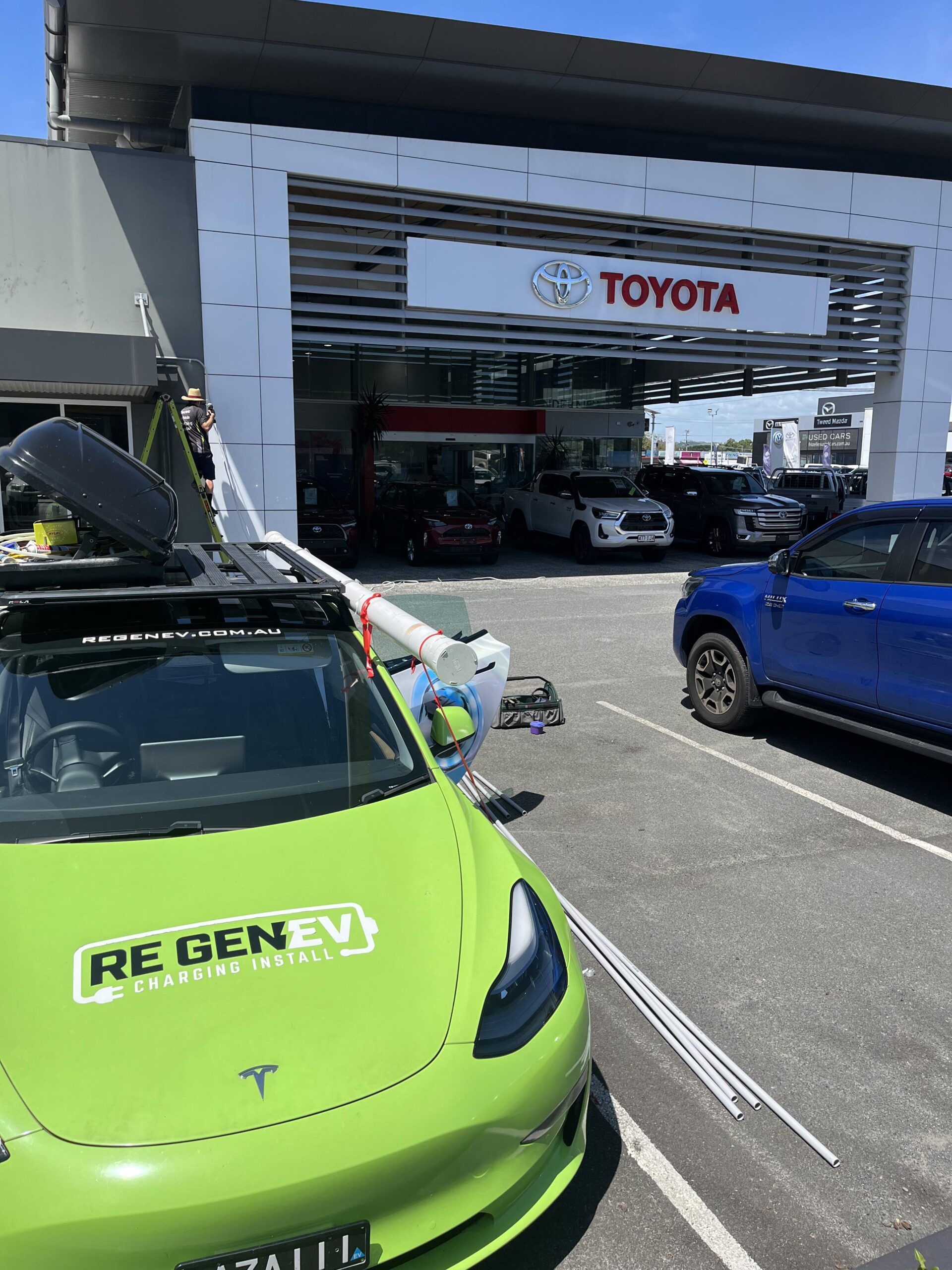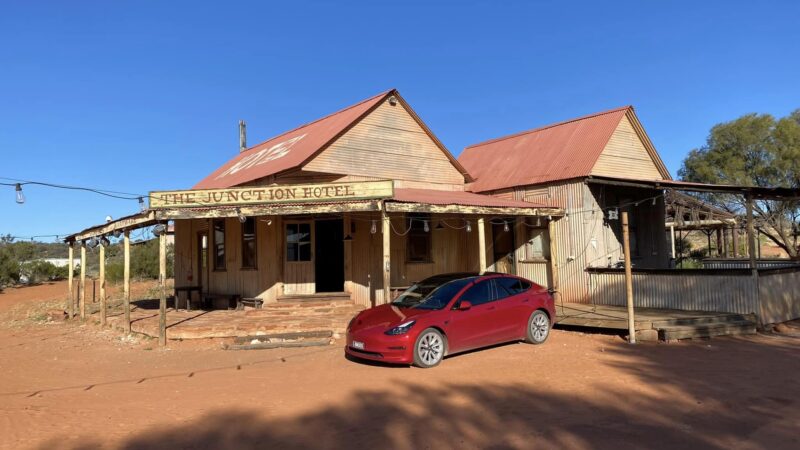Toyota Installs Chargers as the EV Penetration Rate Goes Over the Cliff in Australia
Now that’s two pieces of almost contradictory news. Toyota’s installing chargers, but there are fewer EVs being sold. Added to that, Fully Charged, now rebranded as Everything Electric, has come to Sydney for 2024. As we speak, car manufacturers that snubbed the program last year are exhibiting their offerings. 2024 is shaping up to be yet another exciting year for electric vehicles despite the fact that global growth seems to have dropped from 60% year over year to 35% year over year. Also, still, there were 13.7 million plug-in vehicles sold in 2023!
The big question for me and other electrophiles is, why did Australia’s penetration rate for January barely exceed 5%? I put this question to my Facebook think tank and got a succinct series of answers from wiser heads than mine: 1) Changeover to the Tesla Model 3 Highland. 2) A shipload of Teslas returned to China due to stink bug infestation. 3) Recall/stop sale for the centre child seat tether point issue with the Model 3. Thank you, Luke Smith et al. Indeed, in an interview with Robert Llewelyn, Behyad Jafari, CEO of the Electric Vehicle Council of Australia, stated that had the Glovis Caravel been able to unload its shipment, Australia would have exceeded 100,000 EVs sold in 2023.
It is sad that one carmaker and one shipment can make that much of a difference. But it gives us more hope for the upcoming year. Many have commented that monthly figures for countries like Australia and New Zealand that have no domestic manufacturers can be meaningless. A quarterly result might give a more accurate picture.
Toyota has installed chargers at one dealership in New South Wales, preparing for the imminent arrival of the BZ4X. Many thanks to Arran for the tipoff and the photos. I expect there will be more news on this in further updates.

Fully Charged (err, Everything Electric) is off to a good start in Sydney this weekend. As well as a plethora of charging companies, the following carmakers are listed to exhibit: MG, Polestar, Renault, Peugeot, Genesis, Great Wall Motors, Lotus, Hyundai, Audi, BMW, and Tesla will be represented by the Tesla Owners Club.
Even petrol service station giant Ampol has a stand! But, sadly, Toyota does not. Perhaps next year!
So, what did sell in the Australian electric vehicle market in January 2024?
The top ten selling BEVs in Australia in January 2024 were:
- Tesla Model 3 (723)
- BYD Seal (589)
- MG 4 (537)
- BYD Atto 3 (456)
- Tesla Model Y (384)
- BYD Dolphin (256)
- Kia EV6 (199)
- Volvo XC40 recharge (166 sales)
- MG ZS EV (111)
- Polestar (151)
These may well be the top place getters globally as the market shakes out the “also rans” waiting for their “participation certificates.” I would like to give a special mention to the Kia EV9, recently introduced to the Australian market and posting 47 sales in January.
“It is not a record for BYD — in June 2023 it reported 1532 deliveries. Tesla’s best monthly deliveries result in Australia is 7018 vehicles, reported in June 2023. Tesla sales are likely to return to their usual form in the coming month as deliveries of the updated Model 3 ramp up — now the compliance breach has been addressed — and the stink bug-infested ship is cleaned and returns to Australia,” Drive writes. “Meanwhile BYD is due to introduce a plug-in hybrid ute and mid-size SUV before the end of this year.”
For context: Almost 90,000 light vehicles were sold in Australia in January 2024 — a record for January. 4,893 were plugins. 9,821 were mild hybrids (HEVs). The three top selling brands were Toyota, Mazda, and Ford. Tesla dropped to 19th place. The Ford Ranger was the top selling vehicle.
Australian consumers can now choose between 50 electric vehicles on the market (there were six when I first started looking at EVs in 2012 and 2013 last year). Announcements from auto makers tally 30 new vehicles heading to the land down under in 2024 (including three more from BYD — I am so excited, we are getting the BYD Seagull!!). The Australian market also has 14 light commercial vehicles, and a few medium to heavy trucks and buses. There also rumours of utes, like the BYD PHEV, and Geely’s RADAR RD 6, but I will believe that when I am sitting in one.
Scania’s electric bus is being trialled in Adelaide. An amusing story was recently posted on Facebook of an isolated Australian farmer who told visitors that he had plenty of power from his solar array to charge an electric car but was unable to provide them with petrol for their gas guzzler! Turns the argument on its head, doesn’t it? “Outback in the Northern Territory: No phone coverage, no wifi, no petrol or diesel available at this working farm stay station, but I could charge the car (much to the dismay of some ICE drivers there that were hoping to buy fuel but couldn’t). EV’s will ruin your weekend! If you believe that, you’ll believe anything!”


Another interesting post from a traveller taking his Tesla on a ferry to Kanagroo Island in South Australia: “Received a call from them (SEALINK) today, that they are concerned with having an EV on this particular ferry time as the ferry is carrying significant fuel. I guess it gives us a bit of extra time to explore this beautiful island. … Similar thing happened with the ferry trip to get to Kangaroo Island, they made my car come in last because it’s an EV (maybe if it somehow caught fire they can kick it off the ship more easily as it’s right next to the ferry’s entry ramp?) … I think it’s pretty funny overall, I’m guessing it’s the fear that the car will catch on fire and will be very difficult to extinguish.”
This is on par with the reporting on two house fires in Brisbane recently — speculation is that they were caused by lithium batteries in scooters that were left on charge overnight under the house. Of course, the TV news presenter had to then make a link to electric cars and how fire prone they are. Perhaps as car companies pay for more advertising the FUD may ease.
Some positive notes: the Australian fast charging network is growing faster than the EV fleet. There were no reported queues at public chargers over the holiday period — despite speculation in the media that EV travel would be severely impacted. The federal government is finally bringing fuel efficiency standards — by 2028. My thoughts are that this will be too little, too late. They are modeling themselves on the standards from the EPA in the USA not on the European standards. Toyota has, of course, been lobbying against them. the Tesla Chicks Facebook page has posted a video of over 500 Model 3 Highlands being unloaded at Port of Brisbane.
If Toyota installs chargers, then the future is bright and electric and Toyota.
Have a tip for CleanTechnica? Want to advertise? Want to suggest a guest for our CleanTech Talk podcast? Contact us here.
Latest CleanTechnica.TV Video

CleanTechnica uses affiliate links. See our policy here.

